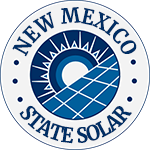New Mexico offers residents and businesses clean energy incentives to install solar panels and invest in clean energy vehicles.
In combination with federal tax credits for green energy, the cost of any new equipment installed can qualify.**
TAX INCENTIVE NOTICE*
**Fraud Alert**
US Green Energy
Click Here to Sign Up for Free Solar Panel Installation
| Schedule | Acceptance Date | Last Day To Register |
|---|---|---|
| Q1 | Monday January 1, 2024 | March 30, 2024 |
| Q2 | Monday April 1, 2024 | June 30, 2024 |
| Q3 | Monday July 1, 2024 | September 30, 2024 |
| Q4 | Tuesday October 1, 2024 | December 30, 2024 |
| Q1 (2025) | Wednesday January 1, 2025 | March 30, 2025 |
Sustainable Building Tax Credit (SBTC)
Solar Market Development Tax Credit (SMDTC)
PLEASE NOTE: Beginning in 2025, the federal tax incentives for solar residential installation will be impacted. See the table below for the dates and amounts currently legislated.
**The Federal tax credit is available every year that new equipment is installed.
New Mexico Government
490 Old Santa Fe Trail Room 400
Santa Fe, NM 87501
(505) 476-2200
Monday – Friday, 7:30 am – 5:30 pm.
Public Service Company of New Mexico
414 Silver Ave. SW
Albuquerque, NM 87102
(505) 241-2750
(888) 342-5766
Monday – Friday, 7:30 am – 6:00 pm.
New Mexico Energy Conservation and Management Division
1220 South St. Francis Drive
Santa Fe, NM 87505
(505) 476-3310
[email protected]
Monday – Friday, 8:00 am – 5:00 pm.
Albuquerque Rock Weather Bureau
2341 Clark Carr Loop SE
Albuquerque, NM 87106-5633
(505) 243-0702
[email protected]
Hours: Open Daily, 24 hours
Clean Energy and Vehicle Federal Tax Credits
Business Federal Tax Credits
State Tax Credit and Rebate Schedule
| Year | Credit Percentage | Availability |
|---|---|---|
| 2024-2032 | 30% | Individuals who install equipment during the tax year |
| 2033 | 26% | Individuals who install equipment during the tax year |
| 2034 | 22% | Individuals who install equipment during the tax year |
| 2007- | 100% sales tax exemption | Individuals who install solar energy systems |
| 2010- | ~100% of property tax if property value increased by 3% or less | Individuals who have solar panel installation within the property |
If you have determined that you are eligible for the green energy credit, complete Form 5695 and attach to your federal tax return (Form 1040 or Form 1040NR).
IRS Form 5695
Instructions
Future Due Dates and Basics
Office of Energy Efficiency & Renewable Energy
Forrestal Building
1000 Independence Avenue, SW
Washington, DC 20585
RESIDENTIAL CLEAN ENERGY TAX CREDIT
New Mexico Clean Energy
Climate Change Bureau
Clean Fuel Standard
Transportation
Clean Car Tax Credit
Climate Adaptation & Resilience Plan (CARP)
Green Energy Project
Email
Power Outage Map
New Mexico Environment Department
Harold L. Runnels Building
1190 St. Francis Drive, Suite N4050
Santa Fe, New Mexico 87505
(800) 219-6157
(505) 827-2855
New Mexico solar incentives are available for the installation of residential solar systems.
New Mexico Solar Credits Overview
Thanks to the fantastic amounts of sunlight, along with efficient house design and a strong set of statewide solar incentives make it one of the best states in the country for producing your own solar electricity at home, saving money and reducing emissions.9
This comprehensive guide explains that the New Mexico solar incentives that can be used by residents to reduce the cost of solar panels, and outlines how to register for free renewable energy programs and rebates that put money in your pocket.
New Mexico’s solar market currently ranks 18th in the country according to the Solar Energy Industries Association.
This is boosted by the state’s policies on renewable energy and federal solar incentives available to residents who would be making the switch.
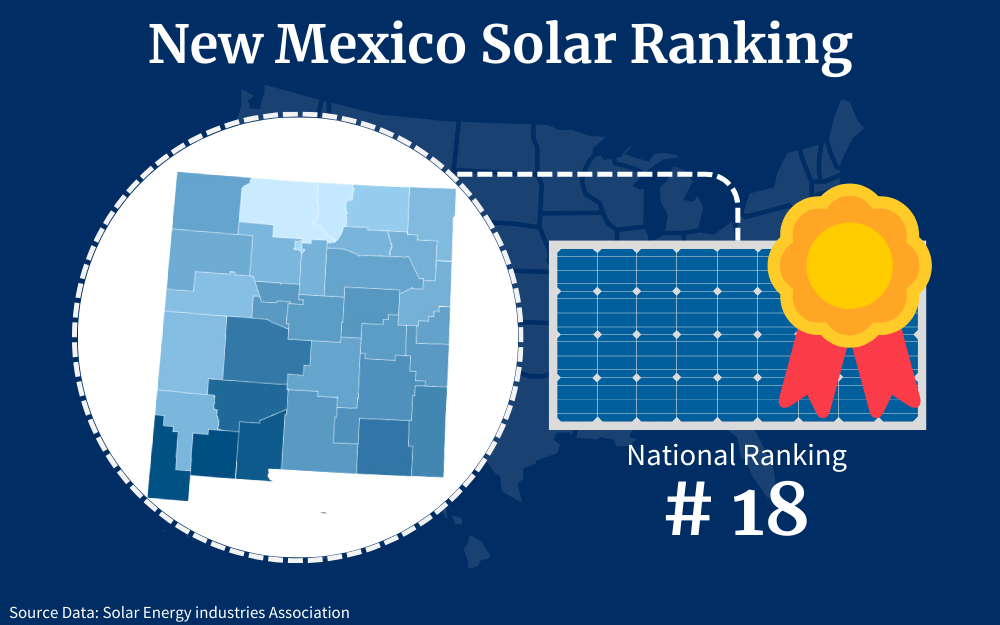
Here are some of the federal and New Mexico solar incentives you can register for in the state.
Federal Tax Credit
One of the biggest tax credits available to New Mexico residents is available to all US residents. It is the federal solar tax credit, sometimes inaccurately talked about as tax-deductible solar panels.
This is the shorthand title which basically refers to the Residential Clean Energy Credit as it applies to solar power. This tax credit entitles you to a reduction in your yearly tax account by 30% of the total cost of your residential solar system.
So by way of example, if you spend $33,000 on a residential solar system you should be eligible for a $10,000 reduction on your federal income tax. The government offers this program to incentivize energy independence and clean energy.
It should definitely be taken advantage of by all USA residential solar customers. You might be wondering, ‘What are the limits on the solar tax credits and rebates?’
There is theoretically no ceiling on the amount you can claim. The percentage of eligible claims is currently at 30% but is set to drop to 26% in 2033.1
New Mexico Solar Tax Credit
In addition to the federal solar tax credit, New Mexico residents are entitled to the New Mexico solar tax credit. The New Solar Market Development Tax Credit Incentive (SMDTC) is available for up to 10% of your solar system cost, and may not exceed $6000.7

The year of eligibility is determined by the year the building code authority clears your system after inspection.2 Once they award you your certificate of eligibility, after a successful application, you then claim the credit from the New Mexico Taxation and Revenue Department.
Required documentation will include proof of ownership, itemized invoices for equipment material and labor costs for the system, a Building Code Inspection Report, and a technical specification system for the system, along with a Statement of Understanding from the contractor.6
Net Metering
Net metering might be, in the long term, the most powerful of all solar programs.4 It works for grid-tied systems.
This program connects solar systems of residential properties to utility electrical grids. This allows you to receive electricity from the grid, and also send electricity to the grid from your production system.
This exchange is beneficial because solar systems often produce an excess of electricity during the day and a deficit at night.
Net metering is the process whereby the local utility company will credit you for the electricity you send them against the electricity they send you. This can mean a total elimination of electricity bills.
Technically net metering is available for many kinds of renewable energy generation, such as wind, geothermal, etc.
But solar arrays are the most common. This is what allows solar systems to be so lucrative in the long run. They can pay for themselves easily in under a decade.
How To Enroll in Net Metering
The net metering requirements and enrollment process are specific to the utility that serves your property. There are various connection requirements and of course, standards for your system before it can be connected, so the process can seem very intimidating.
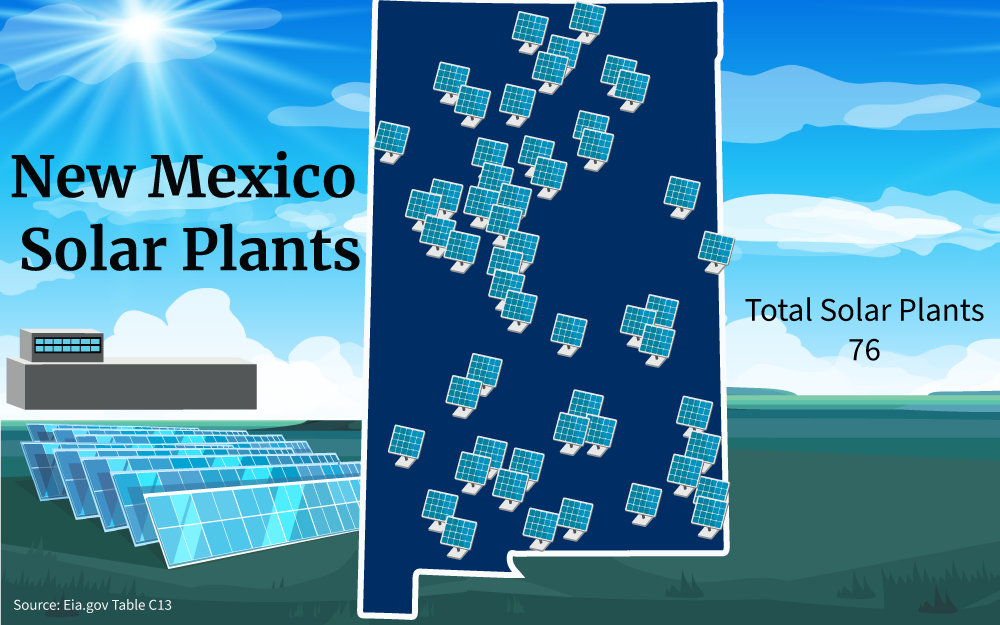
For further technical details, you can check the website of the utility.
However, usually, the best way to enroll in net metering is through the guidance of your installer and the utility website. They have done this many times and it is their job to guide clients through the process.
EERE Programs Explained: Residential Solar Tax Credits
Here are some of the EERE programs in New Mexico that provide residential solar tax credits to its residents.
New Mexico Solar Property Tax Exemption
Another state-level incentive is the property tax exemption. Since most solar systems increase the value of your home, and sometimes significantly, this can be a hidden cost.
Many homeowners, when they do renovations or other home improvement projects have not calculated into their long-term budget the extra property tax that they would have to pay to improve the property.
Many home flippers or homeowners who intend to sell soon do not have to consider these costs heavily because the long-term added property tax is nothing compared to what the increased value of the home will make them in the short term at sale.
However, for those who do not intend to sell, though they rarely break the bank, these taxes can be an unpleasant deterrent to increasing the value of the home.
The state government of New Mexico has made value added from these systems not count towards property tax, to remove the issue entirely. It is one of the great things that make solar panels worth it in New Mexico.
New Mexico Sustainable Building Tax Credit
This sustainable building credit encompasses more than just solar improvements and is designed to reward residents for investing in higher energy efficiency. It functions like a tax credit as those previously described.
To qualify, your home should be certified sustainable by the U.S. Building Green Council according to the LEED green building rating system. Silver certifications or higher qualifications.
From there the credit is determined by the building’s square footage. You could save as much as $6.50 per square foot.2
What Forms Do I Need To Fill Out To Get the Credit?
Most solar tax credits would require you to submit forms and documents before you can avail of the solar credits. Here is a breakdown of the steps
Federal Tax Credit Application
The federal tax credit can be applied for with IRS form 5695. Of course, a tax professional should be consulted along with the IRS instructions to make sure the maximum eligible amount is obtained.
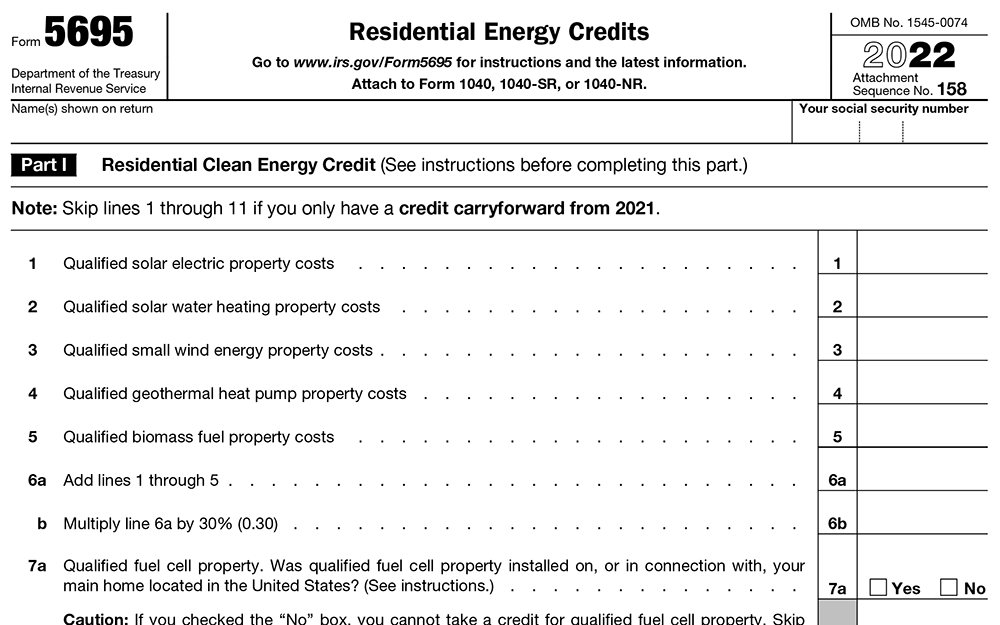
Some basic requirements should be met. It’s important to note that the residence to which the system supplies power does not have to be your main home, and the system does not have to be located on the roof.
It can be ground-mounted or wall-mounted solar panels. Most components of the solar system should contribute to the total eligible cost. These include the panels themselves, inverters, batteries, wiring, etc.
There are even certain roof panels that act as photovoltaic solar cells and these can be eligible. However, most elements that are purely structural will not qualify. For example, if you need to redo your roof to support the weight of the panels, this cost will likely be ineligible.
When it comes to filing your taxes, if the residence for which the system supplies power is jointly occupied with someone else (who is not your spouse and with whom you are not filing taxes jointly), each resident should submit their own solar credit form.1
New Mexico Solar Tax Credit Application
You can obtain most of the required documentation for the application from your installation contractor. The application is filed electronically through the Energy Minerals and Natural Resources Department (EMNRD).5
The state tax credit functions similarly to the federal tax credit. However, it obviously applies to the state, instead of federal taxes and it only credits 10% of the cost, or up to $6,000.
In New Mexico, it is legal for this credit to be sold or transferred to another taxpayer, although this is usually done in specific business settings. New Mexico legislation also says that as well as an individual cap of $6,000, the entire state is collectively capped at $12,000,000 per year.
The collective number as you can imagine is unlikely to reach that high and it is mostly intended as a safeguard for the state budget.
You are eligible for the state tax credit if you are buying solar panels for home improvement or if you install an eligible PV (or thermal) energy system on a property you own. Much like the federal tax credit, this credit is eligible for the year on which the system finished installation, which is counted by the date that the building code authority certifies an approved inspection of the system.
Although the system used to allow paper applications, they have been phased out and almost all of the relevant data will be supplied electronically to the state government through the contractor. Once the electronic application has been completed, you will receive a notice that it has been received and is being considered.
Complete applications are processed on a first come first served basis. A standard processing time is around three to four weeks.
After this, a certificate of eligibility will be emailed, and that certificate can be submitted for the tax credit.
A full breakdown of the credit dynamics can be found on the department website, however, it is important to note some costs which are not eligible to contribute to the credit: unpaid labor (including your own), other unpaid costs, any expenses toward the house or property that are unrelated to the solar system, research costs, financing costs, adjacent structure issues, and travel.
Sustainable Building Tax Credit
This qualification requires forms for both approval and claim.8
It is designed for a wide range of home improvements that can make residences more sustainable and is not limited to solar.
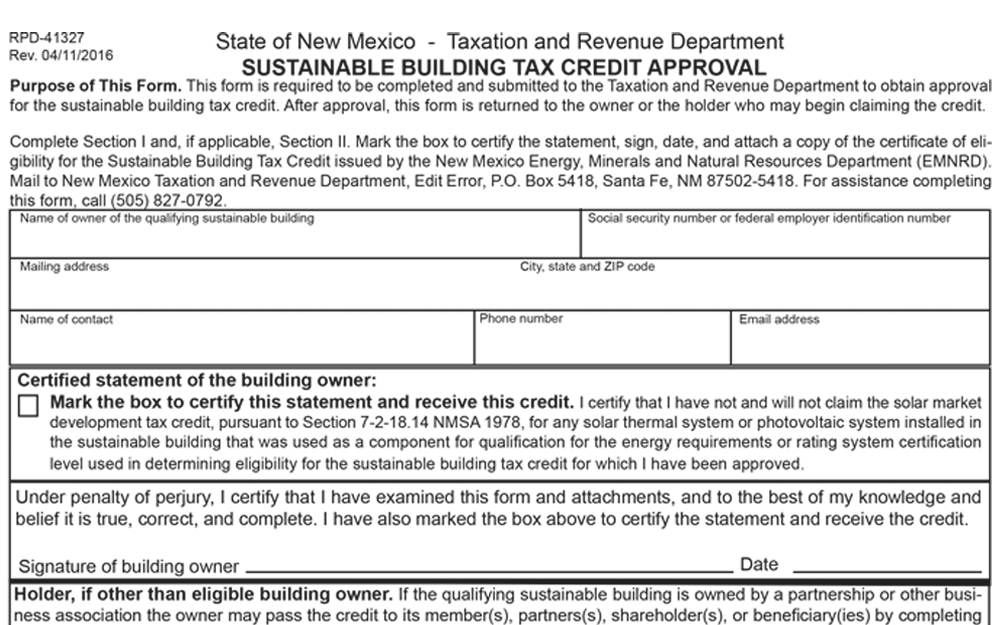
However solar customers can definitely apply, especially if their house modifications include more than just a solar installation, such as installing an EV charging station or changing other elements to make the building more sustainable.
All the information can be found on the site of Taxation and Revenue for the state of New Mexico. One critical thing to note is that, as the application states, a solar system you install cannot count both toward a solar market development tax credit and toward the sustainability qualification to determine eligibility for the sustainable building tax credit.
They include this stipulation in explicit writing on the application form to prevent solar customers from double dipping on New Mexico solar incentives.
Net Metering Explained
Net metering is often thought of as selling solar power to generate income. More precisely it is selling solar power back to the utility grid for credits which will offset your electricity bill.
This means that, with a solar system, you might pay zero dollars for the electricity supplied to you from the grid every month. It is one of the most powerful ways that a residential solar system can benefit you financially.
Once your solar system is installed and ready to operate, the utility company will send a professional to connect solar system to the utility system and install a meter. The meter tracks electricity to and from your residence.
At the end of the month, if you have sent the same value of energy as you’ve received, you owe the utility nothing.
Solar Panel Installation Costs and Renewable Energy Options
Solar system installation costs can vary widely. Since they are usually based on the overall system cost there are a number of factors at play including, system size, equipment quality, the cost of solar panel installation, etc.
However, a typical installer cut can be around 10% of the total, so if we assume a total installation cost of around $ 20,000, then the installation itself may be around $2,000. Of course, this is an estimate only.
Currently, New Mexico obtains renewable energy from biomass, wind turbines, hydroelectric, geothermal and solar energy.
However, incentives are to decrease the cost of residential solar installation.
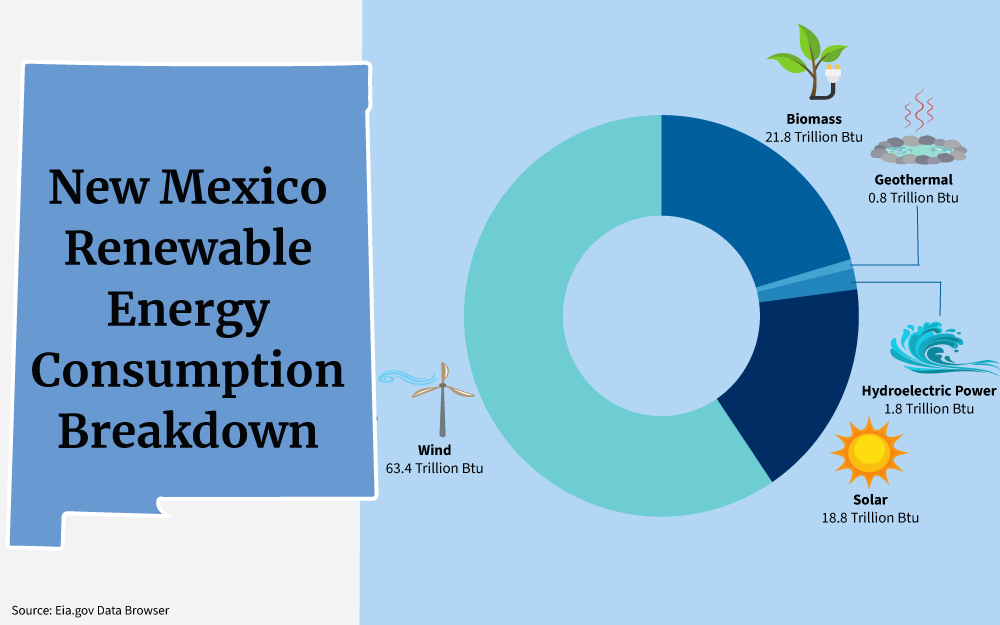
The beauty of New Mexico is that you will save on taxes, potentially have the cost reduced by 30%- 40% thanks to the federal and New Mexico tax credits, and then you will be able to take advantage of net metering. So the system will likely pay for itself in just a matter of years.2
Solar Purchase Process
There are 76 solar plants that are currently running in New Mexico, so it’s safe to say that the solar market here is truly on the rise.
While solar systems can be profitable, purchasing one and getting it ready to operate with the local utility grid can take some time. Once you actually sign the purchase contract, installation can take weeks, not including the meetings beforehand when they survey the property and discuss the type of system you want and how you want it arranged.
Even before that, there should be a research process where you explore your options. After signing the contract, the installer will also have to fill out the necessary permits and other paperwork to begin their work and inspect your home’s electrical system.
Then, once it’s finally installed, the local government and utility company will get involved. The government will send out a representative to make sure things are safe and up to code.
The utility will do the same and set the system up for net metering. Note, that the utility will only be involved for a grid-tied system, and in some cases, the same may be true for local government inspection.
Once the approvals have been obtained, the installer company will meet with the utility to obtain permission to operate. Once that happens, the energy company will connect your system to the grid so you can begin producing power.
It sounds like a lot, but fortunately, these are routine procedures for all involved, and most solar installer companies have experienced professionals to handle most of the coordination for you.
The next step of course is to apply for the relevant New Mexico solar incentives and tax credits. Again, the installer company and your personal tax professional will be your best resources to make sure you get the most out of your solar system.3
Solar Panel Calculator: Requirements and Cost Savings
The overall costs of a solar system obviously vary based on a number of factors. Probably the most important is how much electricity your home uses, this determines the number of panels needed.
Even these can vary in price based on quality, along with the inverters, installer price, etc. On a per-watt basis, the average price in New Mexico is rated at around $3.28/watt.
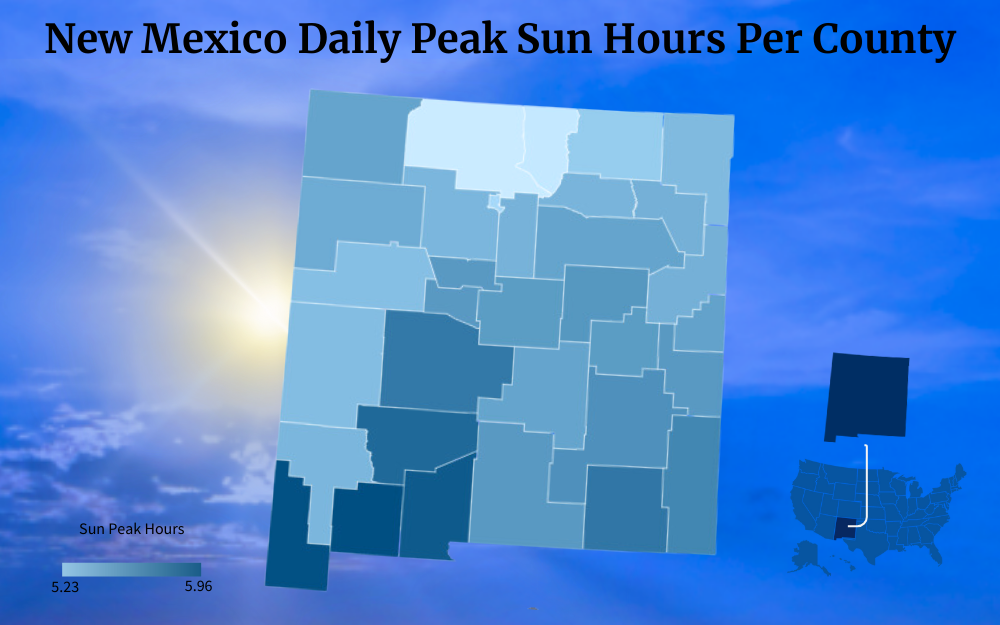
If we say that an average home will want around five kilowatts (kW), then you could be looking at around $15,000 – $20,000 for your system upfront, before accounting for all the credits and tax benefits available.
These will almost certainly reduce the costs by thousands of dollars. Then with net metering available, a solar system in New Mexico can pay for itself in around 6-7 years.
Because of the potential wide range of expenses in installing a solar system, it is usually best to use a solar costs calculator, and then reach out to a local installer for discussion and an official quote.
How To Find NM Solar Panels
The best way to find a reputable solar installer is usually through an online search or reference. An online search will usually give you the most information and the most conveniently, but if someone you know or can talk to has had solar panels for electricity installed on their property, speaking with them personally can be an invaluable source of insight into the process.
And of course, you will likely have the opportunity to meet with a company representative in person before committing to their service.
The choice factors will be relatively straightforward. Obviously, the price is a significant one.
However for a project with a lifespan as long as that of a solar panel system, other factors can outweigh the immediate bottom line. For example, warranties.
Solar panel projects are expensive (up front), complex, and long-lasting. This means that a robust warranty will be an extremely valuable asset.
The second is customer service. People from the installer company will be visiting your house and you will probably have a relationship with the company for years. So customer service should be highly weighted.
Remember, the cost of your system will be offset by various state and federal incentive programs, and the system itself will likely pay for itself and then some. So it is almost certainly well worth paying a little bit more upfront for a job done right.2
New Mexico is one of the best states in the nation for a residential solar system. Its strong year-round sun and powerful New Mexico solar incentives make solar a highly profitable investment.
To recap, New Mexico residents are entitled to all federally available benefits, the biggest of which is usually the federal solar tax credit, which will reduce your yearly tax account by 30% of the cost of your system.
On top of that, the state of New Mexico has its own tax credit which can be up to $6,000. Then factor in the New Mexico sales tax exemption and the fact that increasing your home value with solar will not count towards an increase in property tax.
This means that solar customers in New Mexico are in an excellent position to profit from home solar energy due to the New Mexico solar incentives.10
Frequently Asked Questions About New Mexico Solar Incentives
What If I Send More Electricity Than I Receive to the Electrical Utility Company?
Net metering is the process by which you exchange electricity with your local utility company, sending your surplus energy and taking energy when you are at a deficit, and in the end, only your net balance is charged as an energy bill, however, like most states, you will not receive a payment from the utility if your the credit you are claiming exceeds your tax liability. Instead, the credits will roll over every month and expire at the end of the year.
What If the Tax Credit Would Be More Than My Taxes?
If the expected credit from the federal solar tax credit, which should be about 30% of your total system cost, is expected to exceed your tax liability for the year, the credits will roll over to the next year. The credit is considered ‘non-refundable’ which means that if your credit is more than your liability, you won’t be receiving a check from the IRS for your ‘negative taxes,’ instead you will owe $0 and an unused part of the credit will be eligible to apply to your tax liability for the next year.
Should My Solar Panels Be on the Roof?
If you’re wondering, “what if the solar panels are not on my roof?”, solar panels do not have to be roof mounted to be eligible for federal or state tax credits. In reality, most of the time solar panels are roof-mounted it is due to space-efficiency and aesthetic concerns.
References
1Rosen, A. (2023, August 1). Solar Tax Credit: What It Is and How It Works In 2023. Nerd Wallet. Retrieved September 3, 2023, from <https://www.nerdwallet.com/article/taxes/solar-tax-credit>
2Daugherty, L. (2023, August 30). New Mexico Solar Panels: Pricing and Incentives. SaveOnEnergy. Retrieved September 3, 2023, from <https://www.saveonenergy.com/solar-energy/new-mexico/>
3EnergySage. (2023). New Mexico’s solar incentives are some of the best in America. EnergySage. Retrieved September 3, 2023, from <https://www.energysage.com/local-data/solar-rebates-incentives/nm/>
4Musgrave, G., & Ciolkosz, D. (2023, March 9). The Origins and Meaning of Net Metering. PennState Extension. Retrieved September 13, 2023, from <https://extension.psu.edu/the-origins-and-meaning-of-net-metering>
5New Mexico Energy, Minerals and Natural Resources Department. (2023). New Mexico New Solar Market Development Tax Incentive. New Mexico Energy, Minerals and Natural Resources Department. Retrieved September 13, 2023, from <https://wwwapps.emnrd.nm.gov/ECMD/NSMDSubmissions>
6New Mexico Energy, Minerals and Natural Resources Department. (2023). New Solar Market Development Tax Credit (NSMDTC). Retrieved September 13, 2023, from <https://www.emnrd.nm.gov/ecmd/wp-content/uploads/sites/3/NSMDTC-Contractor-Statement-of-Understanding-08.2023V2.pdf>
7New Mexico Energy, Minerals and Natural Resources Department. (2023). Solar Market Development Tax Credit (SMDTC). New Mexico Energy, Minerals and Natural Resources Department. Retrieved September 13, 2023, from <https://www.emnrd.nm.gov/ecmd/tax-incentives/solar-market-development-tax-credit-smdtc/>
8New Mexico Taxation and Revenue Department. (2016, April 11). Sustainable Building Tax Credit Approval. New Mexico Taxation and Revenue Department. Retrieved September 13, 2023, from <https://www.tax.newmexico.gov/wp-content/uploads/sites/6/2020/10/rpd-41327.pdf>
9New Mexico Taxation and Revenue Department. (2023). Conservation & Preservation Tax Credits. New Mexico Taxation and Revenue Department. Retrieved September 13, 2023, from <https://www.tax.newmexico.gov/tax-professionals/tax-credits-overview-forms/conservation-preservation-tax-credits/>
10U.S. Department of Energy. (2016, July 21). Energy Department Catalyzes New Mexico Solar Boom. Energy.gov. Retrieved September 13, 2023, from <https://www.energy.gov/eere/articles/energy-department-catalyzes-new-mexico-solar-boom>
11Screenshot of IRS Form 5695. Internal Revenue Service. Retrieved from <https://www.irs.gov/pub/irs-pdf/f5695.pdf>
12Screenshot of Sustainable Building Tax Approval Form. New Mexico Taxation and Revenue Department. Retrieved from <https://www.tax.newmexico.gov/wp-content/uploads/sites/6/2020/10/rpd-41327.pdf>
13Screenshot of New Mexico New Solar Market Development Tax Incentive online application requisite form. New Mexico Energy, Minerals and Natural Resources Department. Retrieved from <https://wwwapps.emnrd.nm.gov/ECMD/NSMDSubmissions/prerequisites>
